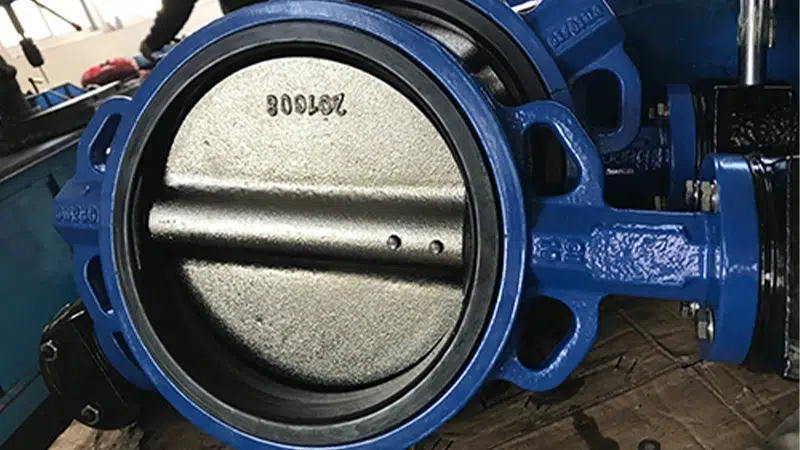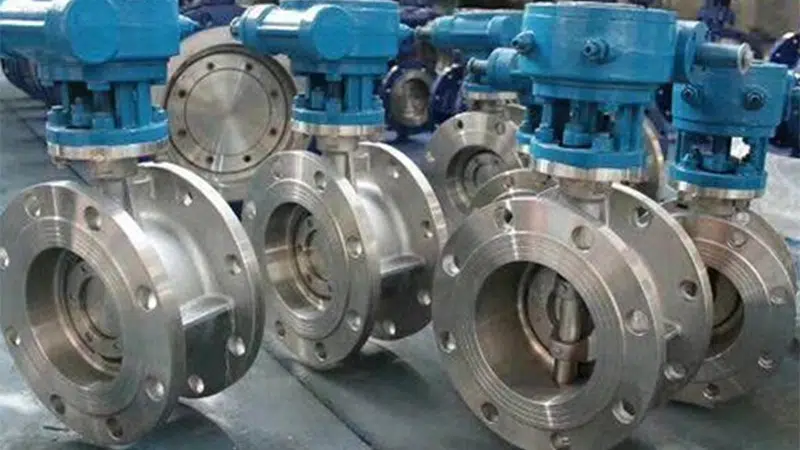Difference between Clamped Butterfly Valve and Flanged Butterfly Valve
Date: 2025-07-12 Categories: Valve knowledge Views: 4038
Excerpt:
This paper systematically analyzes the core differences between butt-clamp butterfly valve and flange butterfly valve. Clamped butterfly valves have a simple structure and are installed by clamping between pipe flanges, which makes them easy to disassemble and install, and are suitable for occasions where space is limited or frequent maintenance is required (e.g., ventilation and water treatment systems); flanged butterfly valves use prefabricated flanges for butt joints, which provide a solid connection and better sealing performance, especially high pressure resistance, and are suitable for petrochemical, electric power and other highly demanding fields. Both of them have their own emphasis on sealing, maintenance cost and application scenarios, which provide a key reference for industrial fluid control selection.
Butterfly valvetogether withFlange Butterfly Valveall belong tobutterfly valveThe common types of fluid control systems are widely used in various fields of industrial fluid control systems. Although their core functions are the same, they show significant differences in structural design and installation methods, which also lead to differences in their specific applications. This article will analyze the differences between Butterfly Valve and Flange Butterfly Valve.

First of all, the difference between butt-clamp butterfly valve and flange butterfly valve is obvious at a glance. Clamped butterfly valves are clamped between two pipe flanges, and the valve body is clamped to the pipe flanges at both ends by bolts to realize the fixation of the valve. This installation process is simple and fast, which is favorable to the rapid disassembly and maintenance of the valve, especially suitable for limited space or the need for frequent replacement of the valve. On the contrary, the flange butterfly valve is equipped with prefabricated flanges at both ends of the valve body, which need to be docked with the pipeline flange and then bolted for fixation. This design enhances the stability of the connection and makes it more suitable for applications under high pressure.

Secondly, in terms of sealing performance, flanged butterfly valves are usually able to realize more excellent sealing effect due to their closer and stronger connection, especially when facing high pressure environments. In contrast, although the clamped butterfly valve also has excellent sealing performance, but in the face of extreme high-pressure conditions, its stability may not be as good as the flange butterfly valve.
In terms of cost maintenance and installation, the Butterfly Valve is usually easier to install and maintain than the Flanged Butterfly Valve due to its simple structure and light weight. The convenience of the butterfly valve makes it widely used in systems that require frequent replacement or maintenance. Although flanged butterfly valves are relatively complicated and time-consuming to install, their robust design ensures reliability in long-term operation, especially for applications where they are not often removed after installation.
Finally, from the perspective of application, the butt-clamp butterfly valve is widely used in ventilation systems, water treatment facilities and light industrial production due to its ease of installation and high cost performance. Flanged butterfly valves, on the other hand, due to their excellent sealing performance and pressure resistance, are more suitable for petrochemical, electric power and public utilities industries, especially in those system environments that require high operating pressure.

















